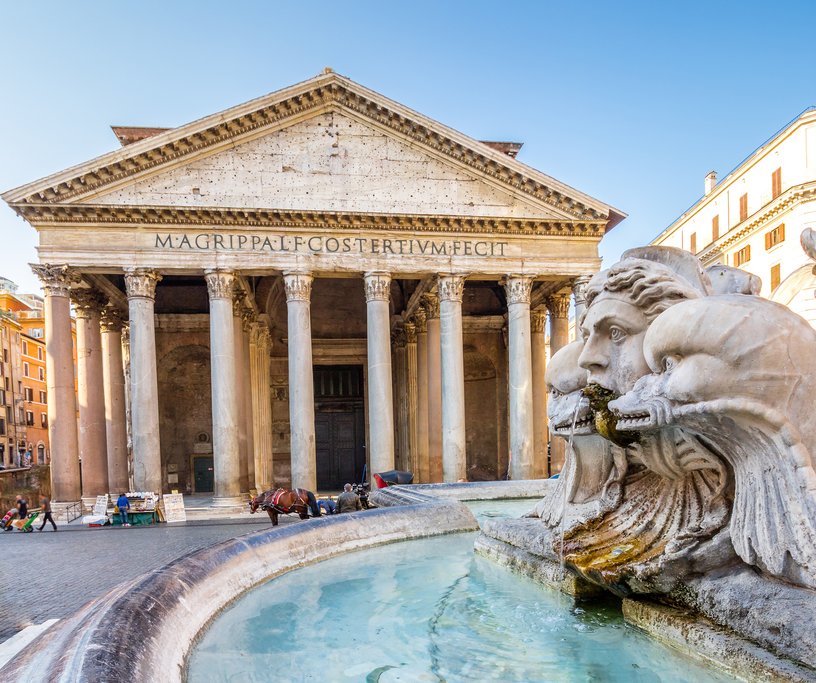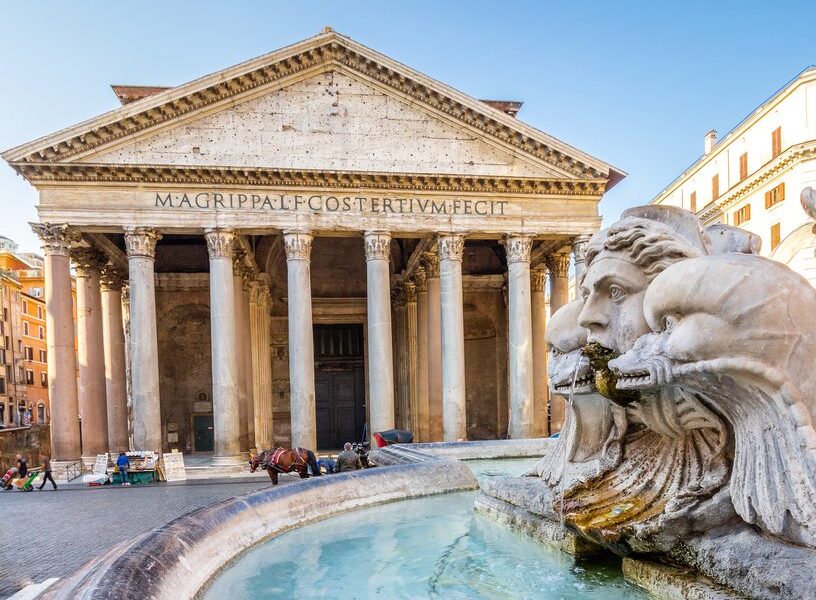
Rome, the Eternal City, is a great destination at any time of year—with a huge variety of cultural and historic riches to explore, it matters little whether the sun is shining or there’s snow on the ground. However, being a very popular destination, there are some times of year that are more crowded with tourists than others, and prices also vary depending on the season. Here are some tips for choosing the best time of year to visit Rome.
## Seasonal Planning for Rome Travel: An Extended Guide
Rome, a city steeped in history and brimming with culture, resides approximately halfway down the western coast of Italy. Its strategic location makes it an ideal starting point for venturing into other captivating regions of Italy. However, Rome itself boasts an abundance of attractions, ensuring that a week-long stay barely scratches the surface of its compelling sights.
For those arriving in or departing from Rome and planning to explore other parts of Italy, it’s crucial to consider the diverse climates and peak seasons across the country. These factors can significantly impact your travel experience. If, however, Rome is your primary destination, a distinct set of considerations comes into play.
Careful planning is essential to ensure a memorable and enjoyable trip to Rome. Several key factors should influence your decision on when to visit, including weather patterns, religious holidays, peak tourism seasons, and, of course, budgetary constraints. Travelers seeking a more budget-friendly experience should aim for the low or shoulder seasons. Conversely, those eager to immerse themselves in the vibrant atmosphere of major religious holidays like Easter or Christmas, or any of the numerous local festivals, should anticipate visiting during busier periods.
The ideal time to visit Rome depends largely on your priorities. If strolling through ancient ruins and exploring picturesque piazzas is high on your list, you’ll want to select a time when the weather is pleasant, avoiding the scorching heat of summer. Alternatively, if indoor art galleries and museums are more your passion (and Rome certainly has no shortage of them), the weather might be less of a deciding factor. Rome’s artistic treasures can be enjoyed year-round, regardless of the conditions outside.
To help you make an informed decision, here’s a detailed breakdown of Rome’s climate and typical conditions throughout the year:
| Season | Average High °F/C | Average Low °F/C | Rainfall |
| Summer (June-August) | 86/30 | 64/18 | 2.5 days |
| Fall (September-November) | 71/22 | 52/11 | 7 days |
| Winter (December-February) | 57/14 | 40/4.5 | 7 days |
| Spring (March-May) | 68/20 | 48/9 | 6 days |
## Summer in Rome: A Season of Sun and Crowds
Summer in Rome is synonymous with sunshine and vibrant energy, but it’s also the city’s busiest season. While the warm weather can be enticing, the combination of high temperatures, humidity, and large crowds can make for a less-than-ideal travel experience. If your travel dates are limited to the summer months, aiming for the earlier or later parts of the season can offer a more pleasant balance of weather and tourist activity.
Across much of Europe, including Italy and, specifically, Rome, summer holidays are a significant tradition, especially during August. Many Romans take a two-week break starting around mid-August, coinciding with the Feast of the Assumption on August 15th. Some even extend their vacation for the entire month. As a result, Rome can feel unusually quiet during August, presenting both advantages and disadvantages.
One of the main benefits of visiting Rome in August is the reduced crowds. You’ll have more space to explore iconic landmarks and enjoy the city’s atmosphere without feeling overwhelmed by tourists. However, the intense heat can make outdoor activities challenging, and many smaller businesses, including hotels, restaurants, and shops, may be temporarily closed. While larger chain hotels and establishments are likely to remain open, family-run businesses often take advantage of the slower period to take a break, heading to cooler locations in the mountains or along the coast. This can result in a less authentic experience of local life in Rome.
### Summer Events in Rome: Celebrating Culture and Heritage
* **Festa della Republica, June 2:** This significant national holiday commemorates the founding of the Italian Republic. Expect to witness impressive parades and dazzling fireworks displays in various locations throughout Rome. The city comes alive with patriotic fervor.
* **Ferragosto (Feast of the Assumption), August 15:** This religious holiday is widely observed across Italy, with many businesses closing or reducing their hours. As mentioned earlier, many Italians take time off during this period, leading to a quieter atmosphere in Rome.
## Fall in Rome: A Time of Transition and Tranquility
As the summer crowds dissipate and Italian families return from their vacations, fall offers a more tranquil and appealing time to visit Rome. With children back in school, the number of tourists decreases, potentially leading to better deals on accommodation, especially later in the season. However, it’s worth noting that some establishments may close for a few weeks during the fall for annual maintenance or renovations. In a bustling metropolis like Rome, you’ll still find plenty of alternative options to explore.
The early fall months tend to be warmer than the later ones, providing comfortable conditions for sightseeing. Fall is also typically the wettest time of year in Rome, which can sometimes hinder plans to fully enjoy the outdoor plazas and ancient ruins. However, Rome boasts a plethora of indoor attractions, such as magnificent churches and captivating art galleries, ensuring that a bit of rain won’t spoil your overall experience.
### Autumn Events in Rome: Celebrating the Harvest and the Arts
* **Festival of the Grape, September:** In a country renowned for its wine production, this festival, traditionally held at the Basilica of Constantine in the Forum, is a major event. It’s a celebration of the grape harvest and Italian winemaking traditions.
* **Rome Jazz Festival, October:** This annual festival provides a perfect excuse to venture out on a cool autumn evening and enjoy world-class jazz performances in various venues across Rome. It’s a treat for music lovers.
## Winter in Rome: A Season of Festive Cheer and Quiet Exploration
Rome’s winter weather generally consists of chilly days, though not usually bitterly cold, although occasional cold snaps bringing snow are possible. It’s also a relatively wet season, so it’s advisable to pack accordingly, with warm clothing and a waterproof jacket. Winter provides opportunities for exploring indoor attractions such as museums and the Vatican.
For the most part, winter in Rome represents the off-season, with the exception of the Christmas period. This translates to potentially lower accommodation prices, favorable airfare deals, and fewer tourists compared to other times of the year.
Rome attracts a significant number of visitors around Christmas for the Pope’s Christmas Eve Mass. Italians celebrate numerous other religious holidays during this period, including the Feast Day of the Immaculate Conception, Santa Lucia Day, Saint Stephen’s Day, Epiphany, and various other saints’ days. Even if you’re not in Rome for Christmas itself, you can still immerse yourself in the festive atmosphere in the lead-up to the holiday, enjoying sparkling lights and beautiful nativity scenes displayed throughout the city.
### Winter Events in Rome: Religious Celebrations and New Year Festivities
* **Christmas, December 25:** While Christmas is primarily celebrated as a family affair in Italy, visitors can attend Christmas Mass at numerous churches and cathedrals throughout Rome. Midnight masses are particularly popular.
* **New Year’s Eve, December 31:** Rome knows how to celebrate New Year’s Eve in style. If you find yourself in the city for NYE, you’ll discover fantastic places to dine and enjoy the vibrant atmosphere. The Piazza del Popolo serves as the heart of the city’s festivities, offering entertainment and spectacular fireworks displays.
* **Epiphany, January 6:** In addition to Christmas, Italians celebrate Epiphany in early January, commemorating the arrival of the Three Kings after the birth of baby Jesus.
* **Carnevale, February/March:** The exact timing of Carnevale varies each year, depending on the date of Easter. This lively festival is celebrated with colorful parades and processions featuring clowns and masked figures.
## Spring in Rome: A Season of Blossoms and Bustling Energy
Weather-wise, spring is an exceptional time to visit Rome. The climate is generally warm without being excessively hot, providing pleasant conditions for exploring the city’s outdoor attractions. However, spring, particularly later in the season and during the Easter holidays, is also a very popular time to travel to Rome. Expect longer lines at popular attractions (purchasing skip-the-line tickets in advance is highly recommended), and it might be challenging to capture that perfect, crowd-free photo of the Trevi Fountain. Nevertheless, the delightful weather often makes up for any inconveniences.
Easter is a significant religious holiday in predominantly Catholic Italy, and Rome experiences a surge in visitors during this period. Vatican City during Easter weekend can feel either overwhelmingly crowded or spiritually uplifting, depending on your perspective. Hotels tend to charge their highest prices of the year around Easter.
### Spring Events in Rome: Celebrating Women and Community
* **Festa della Donna/Women’s Day, March 8:** This international day is widely recognized in Rome. State-run museums have been known to offer free entry to women on this day as a gesture of appreciation.
* **Rome Marathon, March:** Whether you choose to participate or simply spectate, the Rome Marathon creates an exciting atmosphere throughout the city.
* **International Workers’ Day, May 1:** This nationwide holiday is observed with parades and a large, free concert held in Rome, bringing together people from all walks of life.
B-1312

